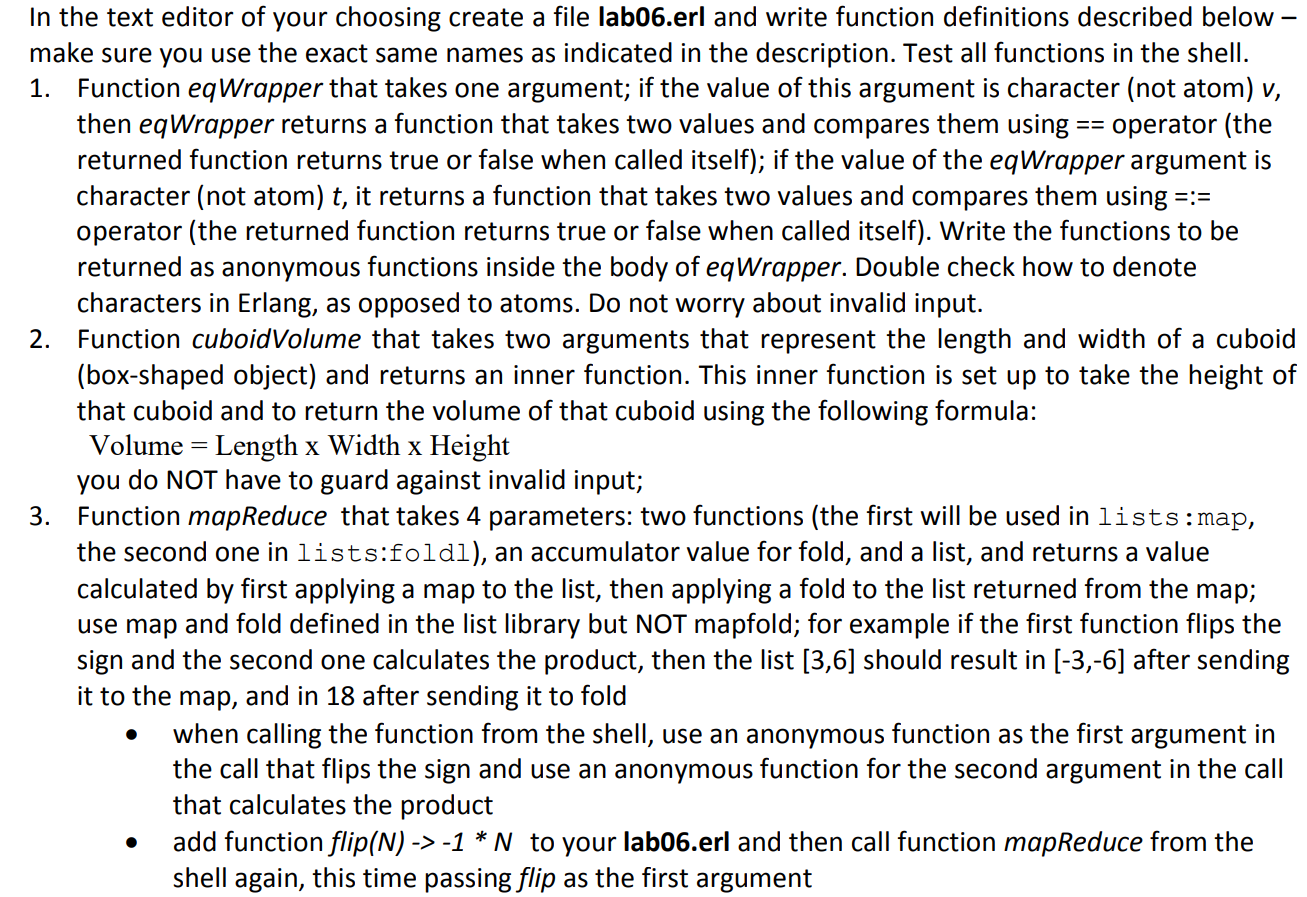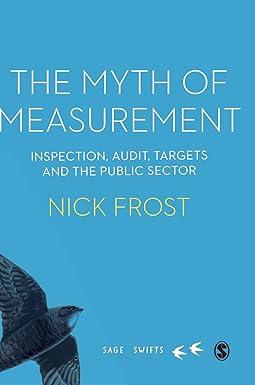Question
Hello please I need help with the following question coding I need you to use Erlang only, if possible answer all the questions please. I
Hello please I need help with the following question coding I need you to use Erlang only,
if possible answer all the questions please.
I have the question and need it to be answer please in Erlang only.
here is it
If you are not able to answer it all please do the first part 1 to number 3 if possible
I really appreciated.
here is the first part asking to create some function in Erlang coding. and i will include the 2nd part as a screenshot and the some code in text
for question 4 is as text

4. Function myPartition that behaves exactly like lists:partition does, i.e. you are writing your own implementation of this function, as if the library one was not available; you can/should use lists:filter though while implementing this function.Download the file bst.erl discussed during the lectures and add the following functions. Test them in the shell:
the file code is
-module(bst).
-export([insert/2]).
-type bst() :: empty | { integer(), bst(), bst()}.insert(N, Tree) ->
case Tree of
empty -> {N, empty, empty};
{Value, Left, Right} ->
if
N {Value, insert(N, Left), Right};
N > Value -> {Value, Left, insert(N, Right)}
end
end.
== In the text editor of your choosing create a file lab06.erl and write function definitions described below make sure you use the exact same names as indicated in the description. Test all functions in the shell. 1. Function eqWrapper that takes one argument; if the value of this argument is character (not atom) v, then eqWrapper returns a function that takes two values and compares them using = operator (the returned function returns true or false when called itself); if the value of the eqWrapper argument is character (not atom) t, it returns a function that takes two values and compares them using =:= operator (the returned function returns true or false when called itself). Write the functions to be returned as anonymous functions inside the body of eqWrapper. Double check how to denote characters in Erlang, as opposed to atoms. Do not worry about invalid input. 2. Function cuboid Volume that takes two arguments that represent the length and width of a cuboid (box-shaped object) and returns an inner function. This inner function is set up to take the height of that cuboid and to return the volume of that cuboid using the following formula: Volume = Length x Width x Height you do NOT have to guard against invalid input; 3. Function mapReduce that takes 4 parameters: two functions (the first will be used in lists:map, the second one in lists:foldl), an accumulator value for fold, and a list, and returns a value calculated by first applying a map to the list, then applying a fold to the list returned from the map; use map and fold defined in the list library but NOT mapfold; for example if the first function flips the sign and the second one calculates the product, then the list (3,6) should result in (-3,-6] after sending it to the map, and in 18 after sending it to fold when calling the function from the shell, use an anonymous function as the first argument in the call that flips the sign and use an anonymous function for the second argument in the call that calculates the product add function flip(N) -> -1 * N to your lab06.erl and then call function mapReduce from the shell again, this time passing flip as the first argument . == In the text editor of your choosing create a file lab06.erl and write function definitions described below make sure you use the exact same names as indicated in the description. Test all functions in the shell. 1. Function eqWrapper that takes one argument; if the value of this argument is character (not atom) v, then eqWrapper returns a function that takes two values and compares them using = operator (the returned function returns true or false when called itself); if the value of the eqWrapper argument is character (not atom) t, it returns a function that takes two values and compares them using =:= operator (the returned function returns true or false when called itself). Write the functions to be returned as anonymous functions inside the body of eqWrapper. Double check how to denote characters in Erlang, as opposed to atoms. Do not worry about invalid input. 2. Function cuboid Volume that takes two arguments that represent the length and width of a cuboid (box-shaped object) and returns an inner function. This inner function is set up to take the height of that cuboid and to return the volume of that cuboid using the following formula: Volume = Length x Width x Height you do NOT have to guard against invalid input; 3. Function mapReduce that takes 4 parameters: two functions (the first will be used in lists:map, the second one in lists:foldl), an accumulator value for fold, and a list, and returns a value calculated by first applying a map to the list, then applying a fold to the list returned from the map; use map and fold defined in the list library but NOT mapfold; for example if the first function flips the sign and the second one calculates the product, then the list (3,6) should result in (-3,-6] after sending it to the map, and in 18 after sending it to fold when calling the function from the shell, use an anonymous function as the first argument in the call that flips the sign and use an anonymous function for the second argument in the call that calculates the product add function flip(N) -> -1 * N to your lab06.erl and then call function mapReduce from the shell again, this time passing flip as the first argument
Step by Step Solution
There are 3 Steps involved in it
Step: 1

Get Instant Access to Expert-Tailored Solutions
See step-by-step solutions with expert insights and AI powered tools for academic success
Step: 2

Step: 3

Ace Your Homework with AI
Get the answers you need in no time with our AI-driven, step-by-step assistance
Get Started


